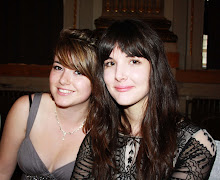 Storyboarding
StoryboardingM. Night Shymalan director of films such as Sixth Sense, The Village and Signs.
Shymalan believes in thorough storyboarding, he likes to plan and understand every shot to keep costs of the filming to a minimum, this eliminates mistakes and decisions to be made on set and in theory could speed up filming and keep costs of staff down. Shymalan prefers to keep camera angles more realistic he does not believe in "acrobatics" unlike other big Hollywood directors. He believes thriller films should have emotion, keeping realistic camera angles allows the audience to feel more connected to the film itself, building emotions like fear and intensity key conventions of the thriller genre.
Storyboarding is said to be visual screenplay "making the movie before you make the movie". Shymalan refers to the storyboard as a continual point of reference. A storyboard is shaping the movie it reveals the movie when the storyboard is completed it can be the worst version of the film.
Sound
In the sixth sense the sound editer and creater experiments with sounds, he layers different sounds whether they are breaths, general sounds or dialogue to create mysterious and eary effects. In part of the sixth sense he got many people to breathe, cry, groan and scream into a microphone then layered them all over eachother to create a ghostly mysterious effect that was quite chilling to hear. Sounds are very important to films, films from the thriller genre especially as they help to create an emotional and spiritual feel to the film.
 In The Village film the main character is a blind girl so sound is very important as it's all she can recognise. The sound in this film helps to tell the story and in this case the sound represents the main character. For understanding of the blind girl the musicians and editors took a small part of the chime of a bell and replayed it and edited it to make a sound like the girl would here, this would have taken alot of presicion and focus to create.
In The Village film the main character is a blind girl so sound is very important as it's all she can recognise. The sound in this film helps to tell the story and in this case the sound represents the main character. For understanding of the blind girl the musicians and editors took a small part of the chime of a bell and replayed it and edited it to make a sound like the girl would here, this would have taken alot of presicion and focus to create.Colour
Based on In the Mood For Love, Wong Kar-Wai

This film is a chinese film based on a love affair, the woman featured in this scene was the woman often left by her husband as he was having an affair with another mans wife, this man was falling in love with the beautiful woman based in this scene.
She wore a green dress and held a green/blue flask this denotes envy and jealousy, the feelings of this woman at the current time of the film, the same green colour is used through out the scene reinforcing her feelings, this is once again reinforced by the music. The colour blue used through out the scene represents her sadness, sorrow and depression, a blue luminous light acts as a spot light on her, this once against reinforces her feelings. This scene is controlled by the use of colour and lighting.









